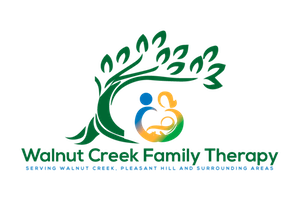Tell a Little Story: The positive impact that storytelling can have on your child
We’ve all been there as moms. Your child trips and falls and is crying inconsolably. You hold and comfort him and help clean up the wound. Maybe you even offer a little kiss on the boo-boo to make it feel all better. But the rest of the day your little sunshine doesn’t seem so happy. Maybe she’s a little extra clingy, a little whiny, and isn’t quite happy with anything that day. You’re not really sure what’s wrong so you go about your day the best you can.
Here’s a little technique that might just make things a little easier next time. It’s an incredibly powerful tool to use with your children: storytelling. This is not getting a book out or telling the story of The Three Little Pigs. Storytelling with your kids is the re-telling of the events your child just experienced. You talk about the content (what happened) and the emotions (how they must have felt).
Here is an example of storytelling with your child after they fall down and hurt themselves:
You: “You were running, playing and feeling so happy and excited. Then you fell down and scraped your hands and knees. You felt surprised, scared and started to cry. Mommy held you tight in her arms. You started to feel calmer but your knees still hurt. Mommy helped you to clean your scrapes. You were afraid it would hurt more but you were brave enough to let me help you clean them and put bandages on. Maybe afterward you felt a little disappointed and angry that you couldn’t run around like you were doing before you fell.”
It’s simple. It takes just a few minutes. And it’s exactly what your child may be needing after experiencing a stressful event.
Storytelling is incredibly effective and powerful, particularly with young children who are trying to make sense of their world everyday. Storytelling helps to increase their comfort after a distressing event and decrease the stress or shame they may be feeling as a result. It helps to regulate their internal emotional state after an event that could disregulate it. Repeated disregulated emotional states in people is what leads to mood changes, behavior problems, anxiety, depression and a whole host of other issues.
And don’t be afraid to be creative! Use props, puppets, dolls, action-figures, drawings, or whatever else you have. Children love that and respond very positively!
When my son was 2 years old, he was in the car with my husband who was backing out of a parking space in one of those crazy cramped parking structures (you know the ones where someone figured out the absolute bare minimum space needed to maneuver around). He backed right into a low concrete wall and did some serious damage for how slow he was going. Even though it was a very small incident to happen in the scheme of car accidents, it definitely scared my son. And guess what we used to help him? You guessed it, storytelling! We went through the whole thing bit by bit with our words and using props. We went through it a few times over the next few days discussing both the actual events and everyone’s feelings. By the end, my son could tell the whole story back to us (and anybody else who would listen, much to daddy’s embarrassment).
The fact that my son was able to process and integrate such a seemingly small event into his mind was critical. He was assured that, although events happen in life that we may not have control over, he can experience any and all feelings that come as a result. He figured out that sometimes things happen that may be out of his routine or unexpected, but his internal emotional regulation remained stable. This was all because of his understanding of the event and his feelings through storytelling.
So the next time something happens and you just know your kiddo may need some help in making sense of the event, try storytelling. You will be amazed at how well it works and how quickly they bounce back, even from the hardest of falls.
